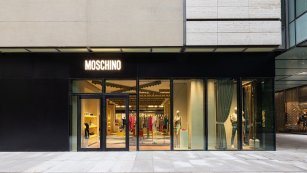Global Luxury Market Ends 2024 With First Annual Contraction Since 2009
Bain and Altagamma forecast a drop of between 2% and 5% by 2025, as a consequence of international geopolitical instability, but also of changing consumer habits and preferences.


The international luxury industry confirms its weakness. The sector ended the 2024 financial year with the first drop in turnover in fifteen years, something that has already been advanced in recent quarters by the results of the world's leading groups in the segment. For 2025, forecasts point to a further decline, according to the spring edition of the 2025 Luxury Goods Worldwide Market report, prepared by Bain and Altagamma.
In 2024, the luxury sector recorded a combined turnover of €364 billion, down 1.35% from €369 billion the previous year."The global luxury sector is facing its deepest disruptions (and its largest potential setbacks in at least 15 years) this year amid increasing economic turbulence, along with complex social and cultural shifts", the report notes.
The Bain and Altagamma forecasts for 2025 draw three possible scenarios. The first and most likely scenario points to a decline of between 2% and 5% in 2025. The authors of the report point out that this scenario has a 60% chance of becoming a reality.
With a 20% probability, the industry would experience a rebound with a turnover evolution between a 2% decrease and a 2% increase, while the third scenario, with another 20% probability of becoming a reality, draws a drop of between 5% and 9%.
Luxury recorded a turnover of €364 billion, down 1.35% on the previous year
Global luxury spending, historically sensitive to uncertainty, is under increasing pressure as luxury consumer confidence is eroded by ongoing economic turbulence, geopolitical and trade tensions, currency fluctuations and financial market volatility, the report justifies.
In Bain and Altagamma's view, "increased volatility in the luxury sector is compounded by the increasingly evident cultural fractures in the industry." Luxury brands face not only weakening consumer confidence, but also growing disillusionment with their products among younger generations, particularly Generation Z," explains the paper.n Z," the paper explains, "this trend challenges the balance between price and value that has long characterized the luxury sector, as a growing group of younger consumers re-evaluate their relationship with luxury.
According to Bain, a number of additional critical stresses are also weighing on the luxury sector. Distribution channels, especially physical and digital multi-brand outlets, are facing restructuring processes. On the other hand, "creative leadership, vital to the sector, is under pressure and is rotating among different brands." In addition, supply chains are also under increasing pressure as geopolitical challenges and regulatory oversight increase.
The evolution of luxury by market is complex. "Both the U.S. and mainland China, two of the most important luxury markets, are experiencing a period of weakening demand due to the current economic turbulence," notes Bain. While tariff-driven volatility is affecting the U.S. market and consumers' willingness to spend, in China, the country's major middle-class markets have frozen their spending.
In both Europe and Japan, markets are affected by weakening tourism, but local demand is partly offsetting the decline. Europe continues to show interest in jewelry and ready-to-wear clothing, especially in destination markets and value-oriented formats. In Japan, limited editions and beauty products are driving momentum. In contrast, luxury markets in the Middle East, Latin America and parts of Southeast Asia remain "robust." Countries such as the United Arab Emirates, Mexico and Indonesia are benefiting from strong local demand and new tourist arrivals.

















